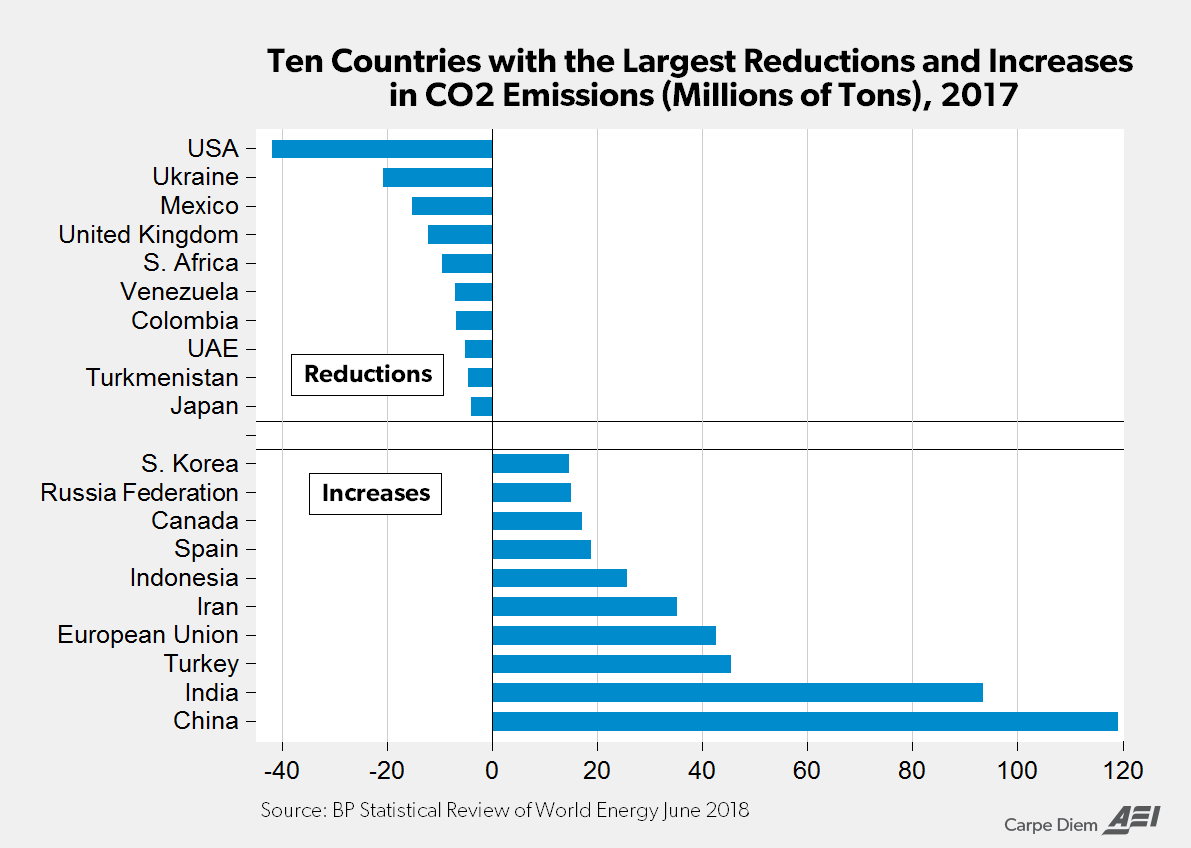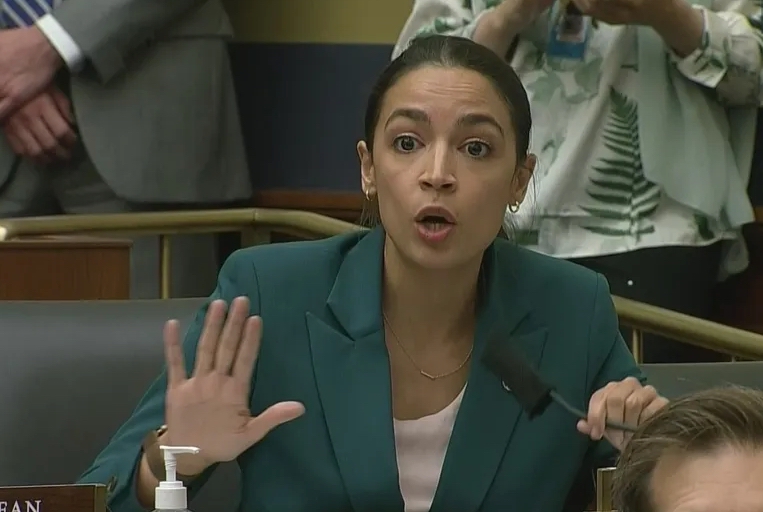Sen. Bernie Sanders recently called climate change “an existential threat” and blamed it for last weekend’s deadly Alabama tornadoes. Gov. Roy Cooper testified before Congress that climate change was to blame for making hurricanes more destructive. Al Gore called climate change No. 1 on the “definitive ranking of the most serious emergencies we’re facing” and said it was responsible for migrant caravans.
Or consider the rhetoric of Rep. Alexandria Ocasio-Cortez: “Millennials and people, you know, Gen Z and all these folks that will come after us are looking up and we’re like: ‘The world is gonna end in 12 years if we don’t address climate change and your biggest issue is how are we gonna pay for it?'”
Bigger hurricanes, existential threat, and the end of the world in a dozen years if we don’t, like, act. They say these things to urge Americans to cut our emissions. As if America is what’s holding back the world from enjoying a cooler, more temperate Shangri-La, with kitten-mild hurricanes purring against our shorelines and none of your polar vortexes to panic Weather Channel personalities.
When it comes to cutting emissions, however, the United States is the Lebron James to the rest of the world’s Cavaliers. Meanwhile, these Cavaliers are too busy sulking about Paris and scoring baskets for the wrong side.
Here are some facts gleaned from the BP Statistical Review of World Energy 2018 report:
- Carbon dioxide emissions in the U.S. are down 15.7 percent since 2007 and are still falling
- Carbon dioxide emissions in Europe, down 12.7 percent since 2007, have been rising since 2014
- Carbon dioxide emissions are rising in 14 out of 19 larger European Union nations, including “ideal” climate nations Germany, Spain, France, and the Netherlands
Oh, and here’s the main point:
- The U.S. leads the world in cutting carbon dioxide emissions
In 2017, the U.S. reduced its carbon dioxide emissions by 42 million tons, the biggest reduction among the nations. It was the third year in a row the U.S. had the largest decline in emissions in the world, and the ninth time this century.
Unfortunately, the U.S.’s reduction was completely negated by the EU’s increase. Meanwhile, China, India, and others continued to belch out, negating several more years’ worth of future U.S. reductions.

Here are some more facts:
- U.S. emissions are at their lowest level since 1992
- Per-capita U.S. emissions haven’t been this low since 1950
If you’re encountering these facts for the first time, you’re probably wondering why. Why don’t we hear this everywhere? Isn’t this exactly what the media, politicians, celebrities, activists, academics, and your neighbor have been wanting for years?
This is great news. Why is it such a big secret? And why should Americans skulk about like climate villains when we are the heroes in this story?
Here’s why: It wasn’t government that succeeded in cutting emissions. It wasn’t forced energy and material austerity. It wasn’t fixed by taking away people’s choices, cars, airplanes, burgers, steaks, ability to have children, and anything else that makes people happy.
Instead, solutions arose in the free market. And that staggers their entire worldview.
Some of it is from technological change driving ever more efficient use of resources. Some is because of consumer preference for more efficient and less “carbon-intensive” goods and services. Another reason is an expanding service sector relative to manufacturing.
But by far the biggest factor is cheap, plentiful natural gas becoming price-competitive to coal. Except when prevented by government policy, energy companies still seek the least-cost generation source, but it has to be reliable (dispatchable). Unlike solar and wind, natural gas is every bit as efficient as coal and just as dispatchable. It offers a clean-burning, one-for-one replacement of coal generation.
Cheap, plentiful natural gas didn’t just happen. It came from the restless entrepreneurial spirit seeking how to unlock known stores of natural gas and oil trapped in shale rock. When this old problem was finally solved in the mid-2000s by combining horizontal drilling with hydraulic fracturing, it changed everything.
Here’s something else to consider — how natural gas compares with other energy sources in terms of federal subsidies and share of electricity generation:
- Solar received by far the most in federal subsidies while producing the least: $2,231 million in subsidies, 1.2% of the nation’s electricity.
- Wind took in $1,266 million in subsidies, producing 5.4% of the nation’s electricity.
- Coal: $1,262 million in subsidies, 29.6% of the nation’s electricity.
- Nuclear: $365 million in subsidies, 19.6% of the nation’s electricity.
- Natural gas: minus $773 million in subsidies, 35% (largest share) of the nation’s electricity. That minus means natural gas paid far more in tax expenditures to the government ($940 million tax liability) than it received in subsidies from the government ($167 million).
So now the top source of electricity in this nation is a net taxpayer, not a gobbler of subsidies? That’s even more good news.
P.S. Want still more good news? Look at how emissions have fallen in North Carolina this whole century:



